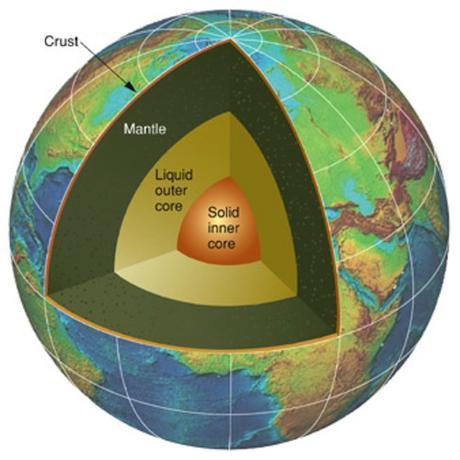Did you know that Jesus preached three times more about Hell than Heaven?
And yet a 2009 survey by the Pew Forum on Religion and Public Life found that only 59% of Americans believe in hell, compared with 74% who believe in heaven. That same year, a Barna poll found that 6 out of 10 American Christians did not believe that Satan is real.
Now, new research by an international team of scientists found that our Earth’s core is mainly composed of sulfur, which is a modern word for what used to be called brimstone. Perhaps there is truth in old myths about the underworld or hell reeking of fire and brimstone.

Space Daily reports, June 22, 2015, that new research published in the peer-reviewed journal, Geochemical Perspectives Letters, shows Earth’s core contains 90% of our planet’s sulfur, estimated to be up to 8.5 x 1018 tons, which is about 10 times the amount of sulfur in the rest of the Earth.
Lead researcher Dr. Paul Savage (Department of Earth Sciences, Durham University, UK) said, “Scientists have suspected that there is sulfur in the core for some time, but this is the first time we have solid geochemical evidence to support the idea.”
For a long time it has been known that the Earth’s core is too light to be made only of iron and nickel, and it was assumed that the core contained other lighter elements, such as sulphur, silicon, oxygen and carbon. However, the Earth’s core begins 2900 km (or 1802 miles) beneath our feet, so it is impossible to investigate directly.
But the international group of researchers were able to develop indirect geochemical methods to show core composition.
Scientists believe that our Moon was formed by a cataclysmic event in the distant past when Earth collided with a large, planet-sized body, tearing off a part which became our Moon. Researchers believe that the impact of the collision melted the Earth’s mantle, allowing a sulfur-rich liquid to form in Earth’s mantle, the vast middle layer between the core and the crust. Some of the sulfurous liquid was probably lost into space, but some remained and sank back into the core.
Because of variability in mantle composition, it is difficult to draw firm conclusions from measuring sulfur directly, so the researchers instead analysed copper from the Earth’s mantle and crust because copper is often bound to sulfur.
The research’s senior author Professor Frederic Moynier (Institut de Physique du Globe, Paris) explains: “We chose copper, because it is a chalcophile element, which means it prefers to be in sulphide-rich material – so is a good element to trace the fate of sulfur on Earth. Generally, where there is copper, there is sulphur; copper gives us a proxy measurement for sulfur.”
Dr. Savage said, “This study is the first to show clear geochemical evidence that a sulphide liquid must have separated from the mantle early on in Earth’s history – which most likely entered the core. We estimate that the quantity of sulfur in the core is vast, around 8.5 x 1018 tonnes, which to give an idea of scale, is around 10% of the mass of the Moon. In addition, the work adds weight to the theory that the Moon was formed via a collision between the Earth and another body. In a way, we can also say that we have life imitating art. For millennia, tales have been told of the underworld being awash with fire and brimstone. Now at least, we can be sure of the brimstone.”
See also “Archeologists find evidence of the obliteration of Sodom-Gomorrah.”
~Éowyn

